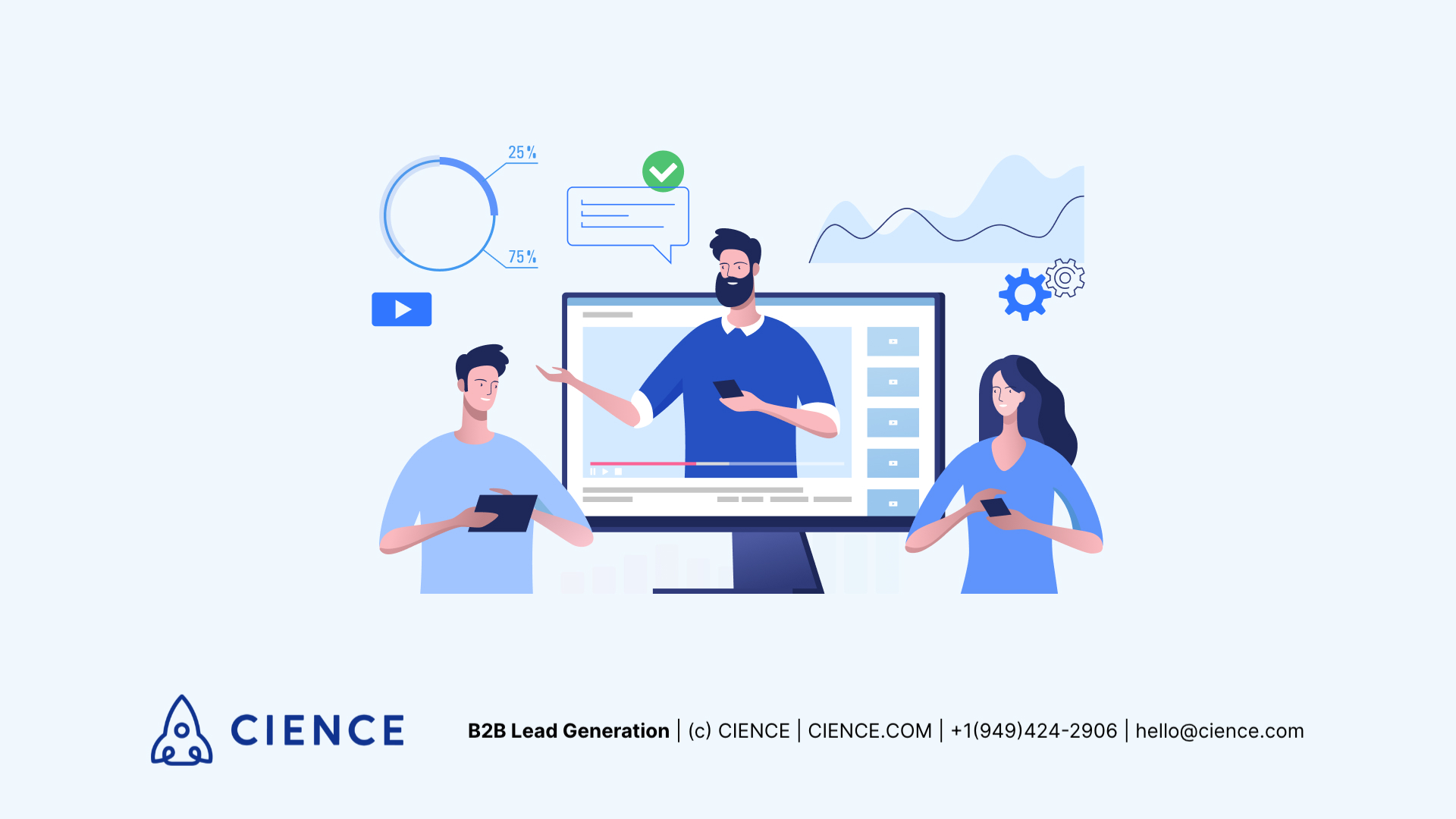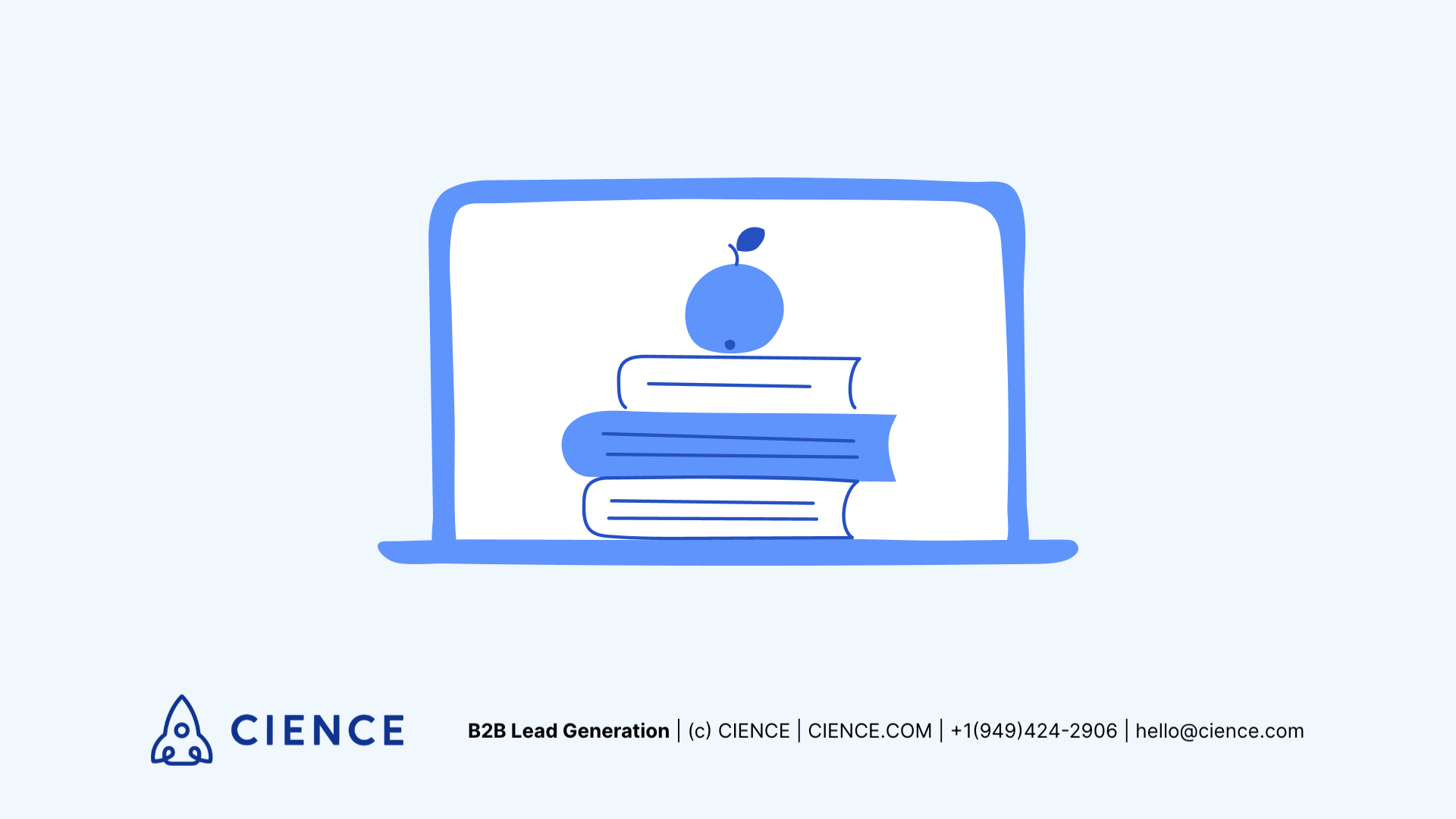5 Tools to Generate More Leads in the Consideration Stage of the Buyer’s Journey
When it comes to the buyer's journey, all stages matter, and you can use several types of content to enhance B2B leads in each one of them. However, today, the consideration stage is often the protagonist.
In this stage, buyers have already identified a problem their company is dealing with. Moreover, they have carried out some research and are considering your product or service as a viable solution. That’s great!
The thing is, you are now also facing stiff competition—prospects are comparing you to those vendors that are also likely to meet their needs.
But don't panic—you just need to make sure that your marketing strategy provides them with content that will position your company as the one that takes off to the decision stage. Unsure of what that looks like?
Let's take a look at best practices and five excellent tools you can—and probably should—make use of at this crucial stage.
Best Practices for B2B Content in the Consideration Stage
When we talk about B2B marketing, the content requirements are a bit different than your standard marketing affair. While much of the same principles apply, there are a few basic practices to keep in mind when you create content in the consideration stage aimed at B2B businesses:
1. Prove your knowledge and expertise in your industry.
This is often accomplished by choosing an idea or skill your company masters and building your content around it.
In the consideration stage, your content has to present detailed information that showcases your expertise. Remember, buyers are already interested in what you offer—now you need to establish your authority and convert them into customers.
2. Provide valuable resources to elicit responses.
Sure, not all people are willing to fill out a form with their names and emails to access your content. But if the material you're offering comes through as a valuable resource, then you are giving them a powerful incentive to do so.
The most qualified leads during the consideration stage are actively looking for the info you are presenting, so the trade-off is often worth it, and your company is already benefiting the moment they access your material.

3. Cover a topic thoroughly but clearly.
When it comes to explaining complicated subjects, it's easy to fall into the trap of being too technical—especially if you are trying to show expertise.
Focus on the clarity or appeal of your content to engage prospects. Be sure to develop your message completely, and then optimize your content to make it engaging and effective in terms of your marketing goals and the audience you are targeting.
5 Tools to Increase B2B Leads in the Consideration Stage
Once you’ve fine-tuned your B2B content, use these five tools to boost your sales pipeline with qualified leads during the consideration stage.
1. Explainer videos (never go out of style)
Videos are one of the most popular content tools these days, and that also applies to B2B marketing. Explainer videos work particularly well in the consideration stage.
Explainer videos present and explain, in a concise way, a complex idea or message. They merge the description of your company's product or service with the solutions it offers for your audience's pain points, making them an extremely reliable marketing tool at this stage of the buyer's journey.
Within explainer videos, you can find whiteboard animations, which combine a voice-over with black-lined, hand-drawn visuals and text onto a white background. It's a particular style meant to streamline data presentation but do so in a charming way.
How helpful are they in increasing B2B leads? Not only do whiteboard animations excel at showing your understanding of the buyers' needs and problems, but they can also help establish a robust line of communication and understanding between both businesses.
Pro tip: Since you will be addressing professional business people, you might be tempted to leave emotions aside and only focus on delivering facts instead. BIG mistake.
Make sure your video provides all the necessary information based on actual data, but make it relatable and human! At the end of the day, there’s an actual person in front of a monitor. Make your message engaging, and they’ll respond to it.

2. Webinars (the ultimate authority enhancers)
In the current pandemic era, B2B companies around the world have increasingly adopted webinars as part of their educational strategies. It turns out that webinars are highly engaging, trusted, and bring plenty of benefits for a B2B marketing strategy as well.
Not only do webinars allow you to gather contact information, but they also enable direct communication with potential clients, which helps your company to build long-lasting relationships with other businesses.
Moreover, if you use a live-streaming platform, webinars become interactive experiences: Attendees can participate by sharing their questions or doubts, and you will provide them with answers and solutions in real-time. You can also include CTA buttons that give your audience access to more of your content or marketing offers.
Webinars can give B2B buyers deeper insights into the product or service you are offering. This way, you can prove to them that your company has the perfect solution to their pain points.
3. E-books and meaningful written content (businesses love them!)
B2B buyers need reliable and accurate information about your service or product to make a decision; that's a given. But it also never hurts to showcase that you are an expert in your industry and have the nitty-gritty know-how to solve their problems. And there are few better ways to do so than through meaningful written content.
So what’s meaningful written content?
- It has to relate to a solution your target audience will be interested in.
- It has to catch people's attention.
- It should invite them to learn more and take their relationship with you a step further.
- It has to be appealing and straightforward.
Among the tools that will help you achieve those goals, e-books and downloadable written material, like white papers or case studies, do an outstanding job. Not only can they work great as standalone pieces of content, but they can also be great incentives to complement email marketing strategies.

4. Landing pages (success just a click away)
Landing pages are specially designed web pages that aim to convince visitors to take a specific action. That action can go from subscribing to a newsletter to outright purchasing your product.
Landing pages don't necessarily have to be part of your website; they can be standalone pages and disappear once you achieve your goal. What they should be is singular in purpose and optimized to fulfill it effectively.
As we mentioned at the beginning, it's essential to provide prospects with valuable information during the consideration stage, and your landing pages can help you achieve that end.
Moreover, landing pages can synergize well with the other content marketing tools we’ve talked about up to this point.
For example, a promotion you run on your social platforms can lead people to your landing page, which can then have an explainer about your product, offer registration to a webinar, or give access to a case study that would interest your potential customers.
No optimized landing page would be complete without the following features:
- Your company logo
- An appealing headline
- The details of the event, product, or content that's central to the page
- Images or videos that showcase what you're offering
- Bullet points that specify the benefits of your proposal
- A form for visitors to fill out
- An eye-catching CTA button
5. Social media offers and influencers (top-notch connection makers)
Social media is increasingly full of B2C companies offering discount pricing and promoting their products or services. And, contrary to popular belief, B2B companies can also benefit from these social media strategies as well.
First, you need to determine what kind of discount you want to offer based on your goals. For instance, if you aim to create a long-term relationship with a prospect and boost loyalty, discounts are a good option. For example, suppose your company works in the IT field. In that case, you can offer free or demo trials to allow potential buyers to try your product before purchasing, or you can promote a free consultation window for your service.
Second, your discounting strategy has to be well-designed to meet your audience's needs. Remember that discounts shouldn't represent a loss for your company—they're an investment. So, if you are considering offering discounts through social media, take the time to tweak your strategy accordingly. Focus on social platforms that make sense for the type of business you want to appeal to, and offer special pricing that's enticing without wrecking your revenue potential.
Finally, don't be afraid of making high-quality connections with influencers who are somehow related to the product or service you are offering. After all, their content and recommendations are highly respected because they’ve already built trust with people, and that same relationship holds value in a B2B environment.
 Generate More Leads in B2B Prospecting
Generate More Leads in B2B Prospecting
The consideration stage is a crucial one. Buyers can go from wanting to know more about what you offer, to losing interest and choosing another alternative in just a few seconds. So, providing them with helpful, relevant, and engaging content is vital.
Use the tools and best practices to develop a solid B2B communication line with potential customers so you can better identify and address their needs in the consideration stage.
Do it right, and you will broaden your possibilities to generate more leads at this crucial part of your sales funnel.
A Few (Related) Sales Posts
 Read full post: 7 Ways to Scale B2B Lead Generation Through Marketing Automation
Read full post: 7 Ways to Scale B2B Lead Generation Through Marketing Automation
7 Ways to Scale B2B Lead Generation Through Marketing Automation
 Featured image: Best Scalable B2B SaaS Lead Generation Strategies - Read full post: Best Scalable B2B SaaS Lead Generation Strategies
Featured image: Best Scalable B2B SaaS Lead Generation Strategies - Read full post: Best Scalable B2B SaaS Lead Generation Strategies

 Read full post: B2B Lead Generation 101: Proven Strategies, Tools & Process Revealed
Read full post: B2B Lead Generation 101: Proven Strategies, Tools & Process Revealed